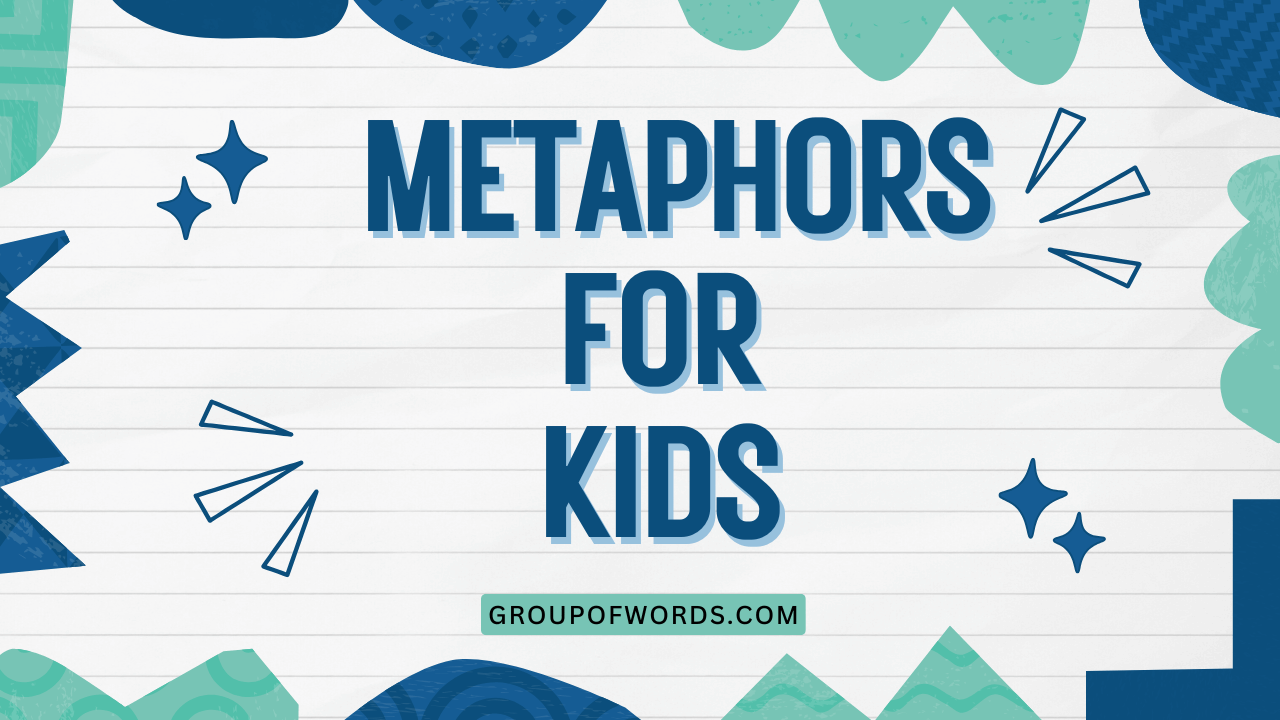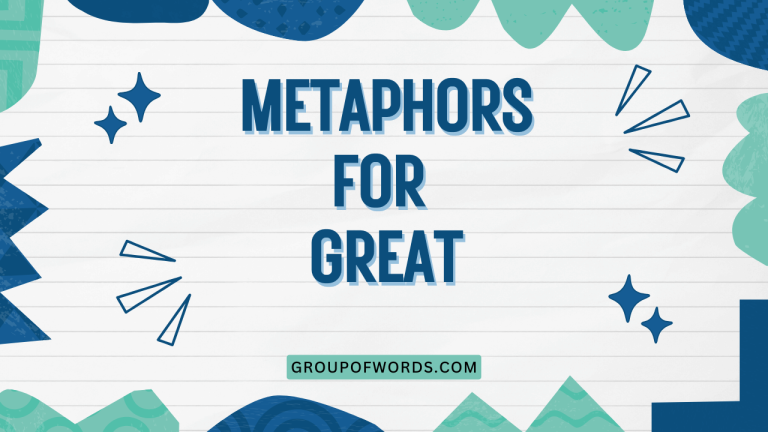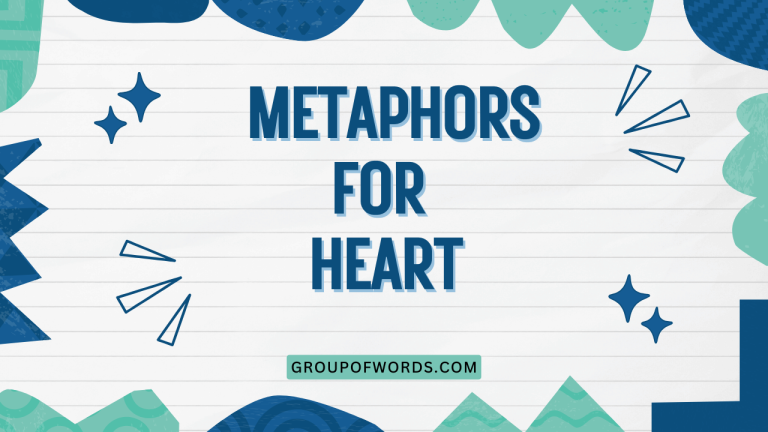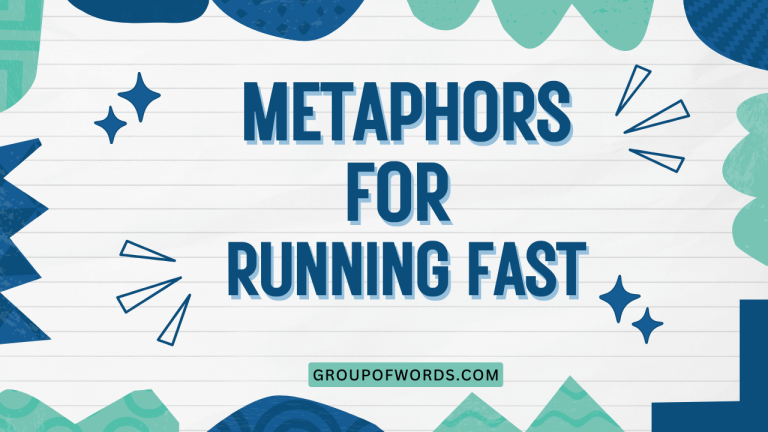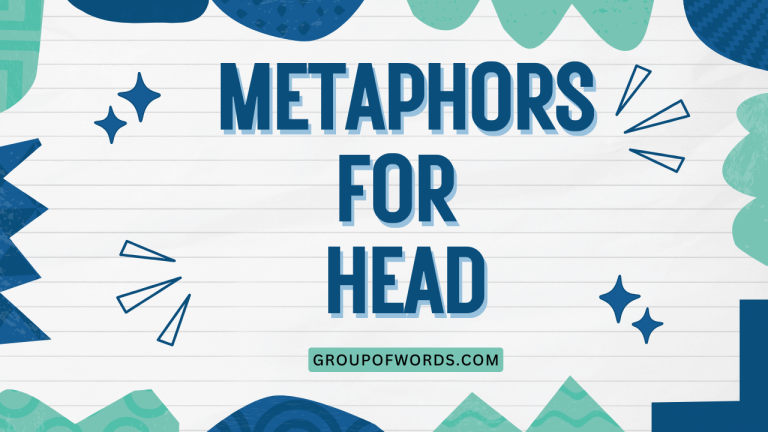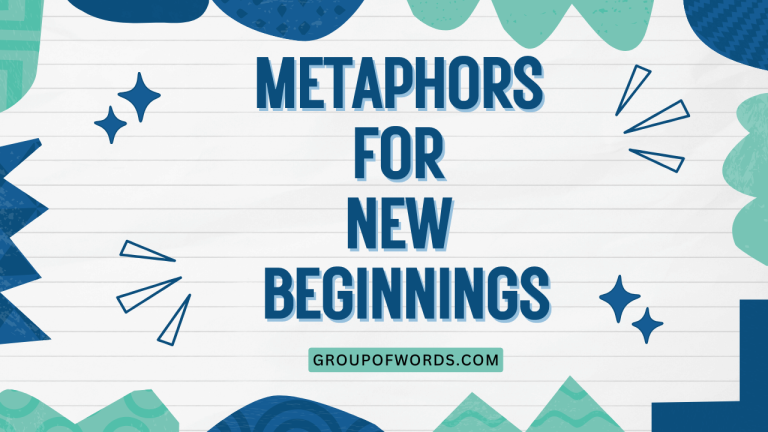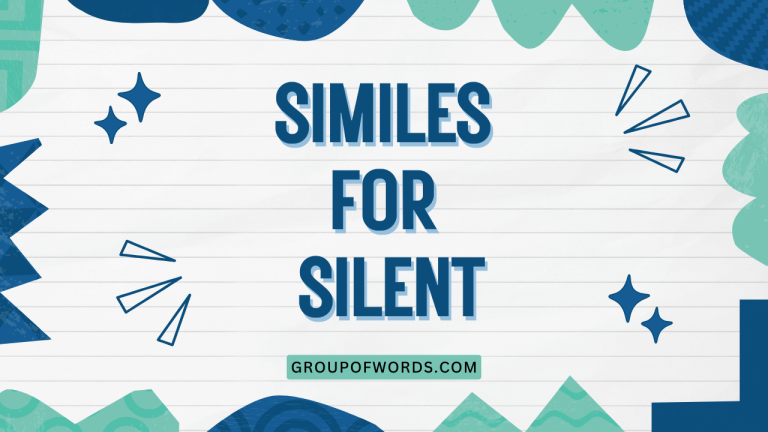Metaphors for Kids: Understanding Figurative Language
Metaphors are a powerful tool in the English language, adding color and depth to our communication. Understanding metaphors is crucial for kids as it enhances their reading comprehension, writing skills, and overall language proficiency.
This article breaks down the concept of metaphors in a simple and engaging way, making it easy for young learners to grasp and appreciate this essential literary device. This guide is useful for students, educators, and parents looking to improve their understading of figurative language.
Table of Contents
- Introduction
- What is a Metaphor?
- Structural Breakdown of a Metaphor
- Types of Metaphors
- Examples of Metaphors
- Usage Rules for Metaphors
- Common Mistakes with Metaphors
- Practice Exercises
- Advanced Topics in Metaphors
- Frequently Asked Questions (FAQ)
- Conclusion
What is a Metaphor?
A metaphor is a figure of speech that directly compares two different things without using “like” or “as.” It states that one thing is another, even though it isn’t literally true. Metaphors help us understand something unfamiliar by relating it to something we already know. They add vividness and creativity to our language, making descriptions more engaging and memorable.
For example, saying “The classroom was a zoo” doesn’t mean there were actual animals in the classroom. Instead, it means the classroom was chaotic and noisy, similar to a zoo.
Metaphors are used in everyday conversation, literature, poetry, and even songs to create a stronger impact and convey deeper meaning.
Structural Breakdown of a Metaphor
A metaphor essentially has two parts: the tenor and the vehicle. The tenor is the subject being described, and the vehicle is what the tenor is being compared to. Understanding these components helps in identifying and interpreting metaphors effectively.
- Tenor: The subject being described.
- Vehicle: What the subject is being compared to.
In the example “The world is a stage,” the tenor is “the world,” and the vehicle is “a stage.” The metaphor suggests that life is like a play, full of performances and roles. Recognizing these elements makes it easier to understand the intended meaning of the metaphor.
Types of Metaphors
Metaphors come in different forms, each with its unique characteristics and uses. Understanding these types can help you appreciate the versatility of metaphors and use them more effectively in your own writing and speech.
Standard Metaphors
Standard metaphors are common and easily recognizable comparisons that are frequently used in everyday language. They provide a quick and effective way to describe something by relating it to a familiar concept.
These metaphors are often simple and direct, making them easy to understand even for young learners.
Examples of standard metaphors include “time is money,” “heart of gold,” and “roller coaster of emotions.” These phrases are widely understood and instantly convey a specific meaning without requiring much interpretation.
Extended Metaphors
An extended metaphor is a metaphor that is developed over several lines or even throughout an entire piece of writing. It takes a single metaphor and explores it in more depth, adding layers of meaning and complexity.
Extended metaphors create a richer and more detailed comparison, allowing for a more profound understanding of the subject.
For instance, in the poem “The Road Not Taken” by Robert Frost, the two roads are an extended metaphor for the choices we make in life. The poet delves into the implications of choosing one path over another, using the metaphor to explore themes of individuality and destiny.
Mixed Metaphors
A mixed metaphor combines two or more inconsistent metaphors in a single expression, often creating a humorous or nonsensical effect. While sometimes used intentionally for comedic purposes, mixed metaphors are generally considered a mistake because they confuse the imagery and undermine the intended meaning.
An example of a mixed metaphor is “Let’s nip it in the bud before it snowballs.” This combines the idea of stopping something small from growing (nipping it in the bud) with the idea of something gaining momentum and becoming uncontrollable (snowballing). The combination creates a confusing and illogical image.
Dead Metaphors
Dead metaphors are metaphors that have become so overused that they have lost their figurative meaning and are now considered literal expressions. These metaphors were once creative and imaginative, but through repeated use, they have become clichés.
Many common phrases we use today started as metaphors but are now considered part of everyday language.
Examples of dead metaphors include “head of the table,” “falling in love,” and “leg of the chair.” These phrases are so common that we no longer think of them as metaphors; they are simply the standard way to describe those things.
Examples of Metaphors
The following tables provide various examples of metaphors to illustrate their use and application in different contexts. These examples are categorized to help you better understand the different ways metaphors can be used.
Table 1: Metaphors Describing People
This table contains metaphors used to describe people, showcasing how metaphors can capture personality traits, emotions, and characteristics in a vivid and imaginative way.
| Metaphor | Meaning |
|---|---|
| He is a lion in battle. | He is brave and fierce. |
| She is a ray of sunshine. | She is cheerful and brings joy. |
| My brother is a couch potato. | My brother is lazy and inactive. |
| The teacher is a fountain of knowledge. | The teacher is very knowledgeable. |
| Her heart is a stone. | She is cold and unfeeling. |
| He is a night owl. | He stays up late at night. |
| She is a busy bee. | She is very active and hardworking. |
| The child is an angel. | The child is well-behaved and innocent. |
| My dad is a rock. | My dad is strong and reliable. |
| He’s a walking encyclopedia. | He knows a lot about many subjects. |
| She is a shining star. | She is talented and successful. |
| He is a lone wolf. | He prefers to be alone. |
| She is a breath of fresh air. | She is refreshing and revitalizing. |
| He is a diamond in the rough. | He has potential but needs polishing. |
| She is an open book. | She is easy to understand and transparent. |
| He is a social butterfly. | He is outgoing and enjoys socializing. |
| She is a walking disaster. | She is clumsy and often makes mistakes. |
| He is a tough cookie. | He is resilient and strong-willed. |
| She is a peacemaker. | She tries to resolve conflicts. |
| He is a chatterbox. | He talks a lot. |
| She is a drama queen. | She is overly dramatic. |
| He is a bookworm. | He loves to read. |
| She is a ray of hope. | She brings hope and optimism. |
| He is a leader. | He guides and inspires others. |
Table 2: Metaphors Describing Emotions
This table presents metaphors that describe emotions, illustrating how metaphors can capture the intensity and complexity of feelings in a vivid and relatable way. These examples demonstrate how emotions can be compared to tangible things to make them more understandable.
| Metaphor | Meaning |
|---|---|
| Anger is a fire. | Anger is intense and destructive. |
| Sadness is a heavy blanket. | Sadness is overwhelming and suffocating. |
| Happiness is sunshine. | Happiness is bright and warm. |
| Fear is a cold hand. | Fear is unsettling and paralyzing. |
| Love is a battlefield. | Love is full of challenges and struggles. |
| Jealousy is a green-eyed monster. | Jealousy is consuming and destructive. |
| Hope is a fragile seed. | Hope is delicate and needs nurturing. |
| Despair is a dark abyss. | Despair is hopeless and overwhelming. |
| Anxiety is a whirlwind. | Anxiety is chaotic and uncontrollable. |
| Grief is a deep wound. | Grief is painful and takes time to heal. |
| Excitement is electricity. | Excitement is energizing and thrilling. |
| Loneliness is a vast desert. | Loneliness is isolating and empty. |
| Contentment is a warm fire. | Contentment is comforting and satisfying. |
| Regret is a bitter pill. | Regret is unpleasant and hard to accept. |
| Frustration is a brick wall. | Frustration is an obstacle that is hard to overcome. |
| Joy is a song. | Joy is uplifting and harmonious. |
| Disappointment is a cold shower. | Disappointment is shocking and unpleasant. |
| Embarrassment is a spotlight. | Embarrassment is exposing and uncomfortable. |
| Guilt is a heavy weight. | Guilt is burdensome and oppressive. |
| Peace is a gentle stream. | Peace is calming and serene. |
| Envy is a hidden poison. | Envy is destructive and insidious. |
| Pride is a tall mountain. | Pride is imposing and lofty. |
| Confusion is a tangled web. | Confusion is complicated and difficult to understand. |
| Relief is a cool breeze. | Relief is refreshing and welcome. |
Table 3: Metaphors Describing Places and Things
This table contains metaphors used to describe places and things, demonstrating how metaphors can bring inanimate objects and locations to life with vivid imagery and imaginative comparisons. These examples illustrate how metaphors can transform ordinary descriptions into something extraordinary.
| Metaphor | Meaning |
|---|---|
| The city is a jungle. | The city is chaotic and dangerous. |
| The internet is an information superhighway. | The internet allows for fast and easy access to information. |
| The library is a treasure chest. | The library is full of valuable knowledge. |
| The computer is a brain. | The computer processes information like a brain. |
| The world is a stage. | Life is a performance with different roles. |
| The school is a training ground. | The school prepares students for the future. |
| The garden is a paradise. | The garden is beautiful and peaceful. |
| The house is a sanctuary. | The house is a safe and comforting place. |
| The road is a ribbon of moonlight. | The road is illuminated by the moon. |
| The storm is an angry beast. | The storm is powerful and destructive. |
| The night is a black velvet blanket. | The night is dark and soft. |
| The stars are diamonds in the sky. | The stars are bright and beautiful. |
| The clouds are cotton balls. | The clouds are soft and fluffy. |
| The sun is a golden coin. | The sun is bright and valuable. |
| The rain is liquid sunshine. | The rain is nourishing and life-giving. |
| The river is a silver snake. | The river is winding and shimmering. |
| The mountain is a sleeping giant. | The mountain is large and imposing. |
| The forest is a green cathedral. | The forest is majestic and awe-inspiring. |
| The ocean is a restless heart. | The ocean is constantly moving and unpredictable. |
| The wind is a playful spirit. | The wind is light and lively. |
| The moon is a pearl in the night. | The moon is beautiful and rare. |
| The fire is a hungry monster. | The fire is consuming and dangerous. |
| The desert is a sea of sand. | The desert is vast and barren. |
| The ice is a glittering mirror. | The ice is reflective and beautiful. |
Usage Rules for Metaphors
Using metaphors effectively involves understanding certain rules and guidelines. Here are some key points to keep in mind:
- Clarity: Ensure the comparison is clear and easy to understand. The connection between the tenor and vehicle should be apparent.
- Relevance: Choose a vehicle that is relevant to the tenor. The comparison should make sense and enhance the description.
- Originality: Aim for fresh and imaginative metaphors. Avoid clichés and overused comparisons.
- Consistency: Maintain consistency in your metaphors. Avoid mixing metaphors that create confusing or contradictory images.
- Appropriateness: Consider the audience and context. Choose metaphors that are appropriate for the situation and the readers’ understanding.
By following these rules, you can use metaphors effectively to add depth, color, and creativity to your writing and speech. Metaphors should enhance understanding, not confuse or distract the reader.
Common Mistakes with Metaphors
Even experienced writers can make mistakes when using metaphors. Here are some common errors to watch out for:
- Mixed Metaphors: Combining two or more inconsistent metaphors.
- Incorrect: “We need to grab the bull by the horns and put the pedal to the metal.”
- Correct: “We need to tackle the problem head-on.”
- Clichés: Using overused and unoriginal metaphors.
- Incorrect: “He was as cool as a cucumber.”
- Correct: “He remained calm and composed under pressure.”
- Unclear Comparisons: Using metaphors that are difficult to understand or interpret.
- Incorrect: “The idea was a purple elephant.”
- Correct: “The idea was unconventional and attention-grabbing.”
- Inappropriate Metaphors: Using metaphors that are not suitable for the context or audience.
- Incorrect: “The funeral was a real party.”
- Correct: “The funeral was a somber and respectful occasion.”
Avoiding these common mistakes will help you use metaphors more effectively and create stronger, more impactful writing.
Practice Exercises
Test your understanding of metaphors with the following exercises. Identify the metaphors in each sentence and explain their meaning.
Exercise 1: Identifying Metaphors
Read each sentence and identify the metaphor. Explain what two things are being compared and what the meaning of the metaphor is.
| # | Sentence | Metaphor | Meaning |
|---|---|---|---|
| 1 | The snow is a white blanket. | The snow is a white blanket. | The snow covers everything like a blanket. |
| 2 | Time is a thief. | Time is a thief. | Time steals away our moments. |
| 3 | Her voice is music to his ears. | Her voice is music to his ears. | Her voice is pleasant and soothing. |
| 4 | The road was a ribbon of moonlight. | The road was a ribbon of moonlight. | The road was illuminated by the moon. |
| 5 | Life is a journey. | Life is a journey. | Life is a series of experiences and challenges. |
| 6 | He is a shining star. | He is a shining star. | He is talented and successful. |
| 7 | The world is a stage. | The world is a stage. | Life is a performance with different roles. |
| 8 | She is a ray of sunshine. | She is a ray of sunshine. | She is cheerful and brings joy. |
| 9 | His words are daggers. | His words are daggers. | His words are hurtful and sharp. |
| 10 | The classroom was a zoo. | The classroom was a zoo. | The classroom was chaotic and noisy. |
Exercise 2: Creating Metaphors
Complete each sentence by adding an appropriate metaphor. Be creative and use your imagination.
| # | Sentence | Possible Metaphor |
|---|---|---|
| 1 | The rain was like _____. | falling tears |
| 2 | Her smile is _____. | a burst of sunshine |
| 3 | His anger was _____. | a raging storm |
| 4 | The city at night is _____. | a blanket of stars |
| 5 | The baby’s skin was _____. | soft velvet |
| 6 | The music was _____. | a soothing balm |
| 7 | The test was _____. | a mountain to climb |
| 8 | Her laughter is _____. | a melody |
| 9 | The news was _____. | a bombshell |
| 10 | The memory was _____. | a fading photograph |
Exercise 3: Identifying Types of Metaphors
Read each example and identify whether it is a standard metaphor, extended metaphor, mixed metaphor, or dead metaphor.
| # | Example | Type of Metaphor |
|---|---|---|
| 1 | Time is money. | Standard Metaphor |
| 2 | “All the world’s a stage, And all the men and women merely players; They have their exits and their entrances, And one man in his time plays many parts.” | Extended Metaphor |
| 3 | Let’s get the ball rolling and hit the ground running. | Mixed Metaphor |
| 4 | Head of the class. | Dead Metaphor |
| 5 | He is a wolf in sheep’s clothing. | Standard Metaphor |
| 6 | “Hope is the thing with feathers That perches in the soul And sings the tune without the words And never stops at all” |
Extended Metaphor |
| 7 | We need to iron out the wrinkles and put the pieces together. | Mixed Metaphor |
| 8 | Falling in love. | Dead Metaphor |
| 9 | She has a heart of gold. | Standard Metaphor |
| 10 | “Life’s but a walking shadow, a poor player, That struts and frets his hour upon the stage, And then is heard no more. It is a tale Told by an idiot, full of sound and fury, Signifying nothing.” |
Extended Metaphor |
Advanced Topics in Metaphors
For advanced learners, exploring the nuances of metaphors can lead to a deeper appreciation of language and literature.
- Conceptual Metaphors: Understanding how metaphors shape our thinking and perception of the world.
- Metaphorical Analysis: Analyzing metaphors in literature and poetry to uncover deeper meanings and themes.
- Creating Original Metaphors: Developing the skill to create fresh and imaginative metaphors that enhance writing and communication.
- The Role of Metaphors in Persuasion: Examining how metaphors are used in rhetoric and persuasive communication to influence opinions and beliefs.
By delving into these advanced topics, you can further refine your understanding and use of metaphors.
Frequently Asked Questions (FAQ)
Here are some frequently asked questions about metaphors:
- What is the difference between a metaphor and a simile?
A metaphor directly compares two things by stating that one thing is another, while a simile compares two things using “like” or “as.” For example, “He is a lion” (metaphor) vs. “He is brave like a lion” (simile).
- Why are metaphors important?
Metaphors add color, depth, and creativity to language. They help us understand complex ideas by relating them to familiar concepts. They also enhance reading comprehension, writing skills, and overall communication.
- How can I identify a metaphor in a sentence?
Look for statements that compare two different things without using “like” or “as.” Ask yourself if the statement is literally true. If not, it’s likely a metaphor.
- What is a mixed metaphor and why is it bad?
A mixed metaphor combines two or more inconsistent metaphors, creating a confusing or nonsensical image. It is generally considered a mistake because it undermines the intended meaning.
- Can a metaphor be too complex?
Yes, a metaphor can be too complex if it is difficult to understand or interpret. The comparison should be clear and relevant to the audience.
- How can I improve my ability to use metaphors?
Read widely, pay attention to how metaphors are used in literature and everyday language, and practice creating your own metaphors. Focus on clarity, relevance, and originality.
- Are metaphors only used in literature?
No, metaphors are used in various contexts, including everyday conversation, speeches, advertising, and even scientific explanations. They are a versatile tool for communication.
- What is the difference between a dead metaphor and a standard metaphor?
A dead metaphor is a metaphor that has become so overused that it has lost its figurative meaning and is now considered a literal expression. A standard metaphor is a common and easily recognizable comparison that is still understood as figurative.
Conclusion
Understanding metaphors is a valuable skill that enhances language comprehension and expression. By grasping the definition, structure, types, and usage rules of metaphors, kids can improve their reading, writing, and overall communication abilities.
Metaphors add depth, color, and creativity to language, making it more engaging and memorable.
Remember to practice identifying and creating metaphors to strengthen your understanding. Avoid common mistakes like mixed metaphors and clichés.
With consistent effort, you can master the art of using metaphors effectively and appreciate the power of figurative language. Keep exploring and experimenting with metaphors to unlock new levels of creativity in your communication.
